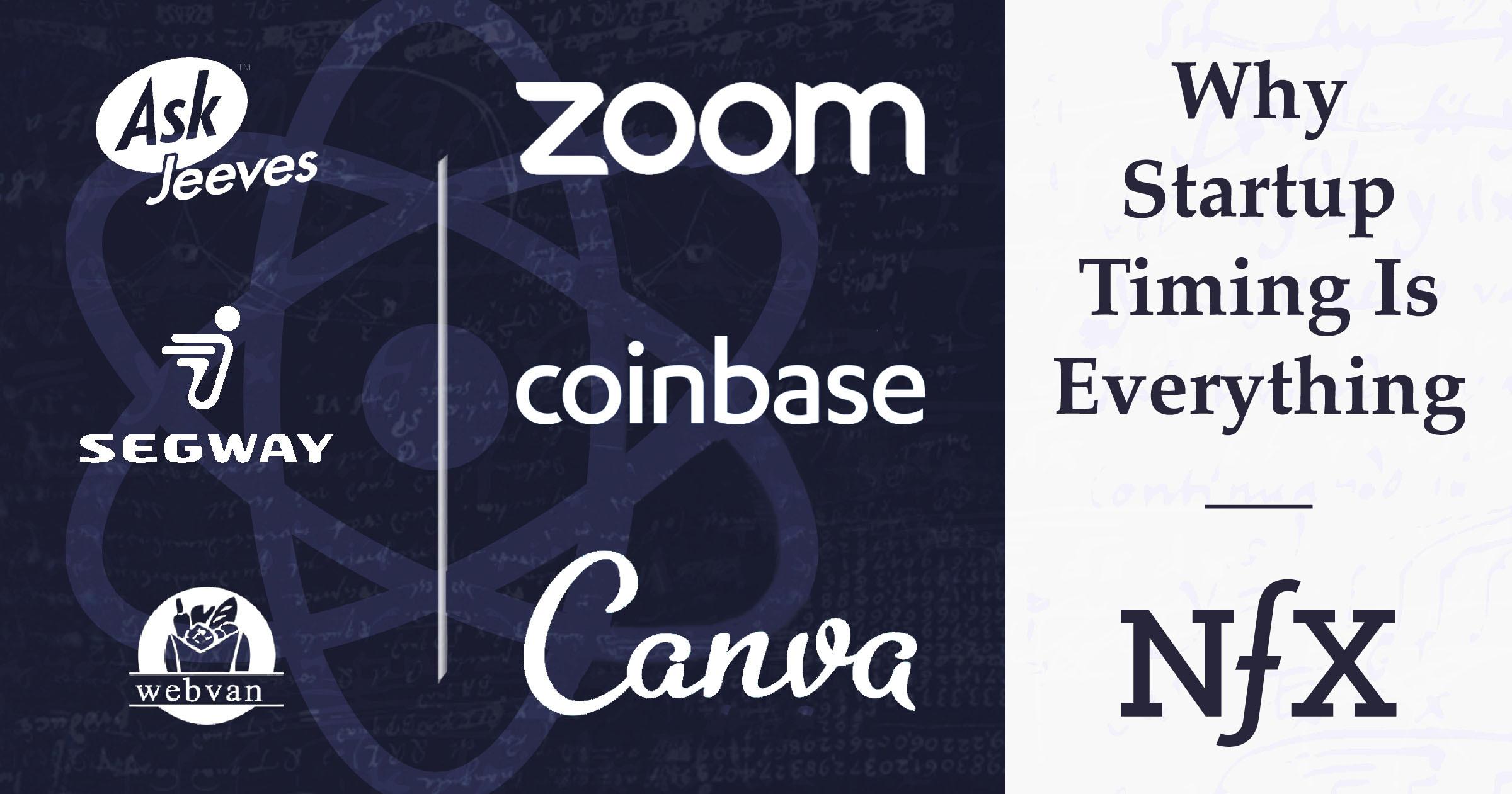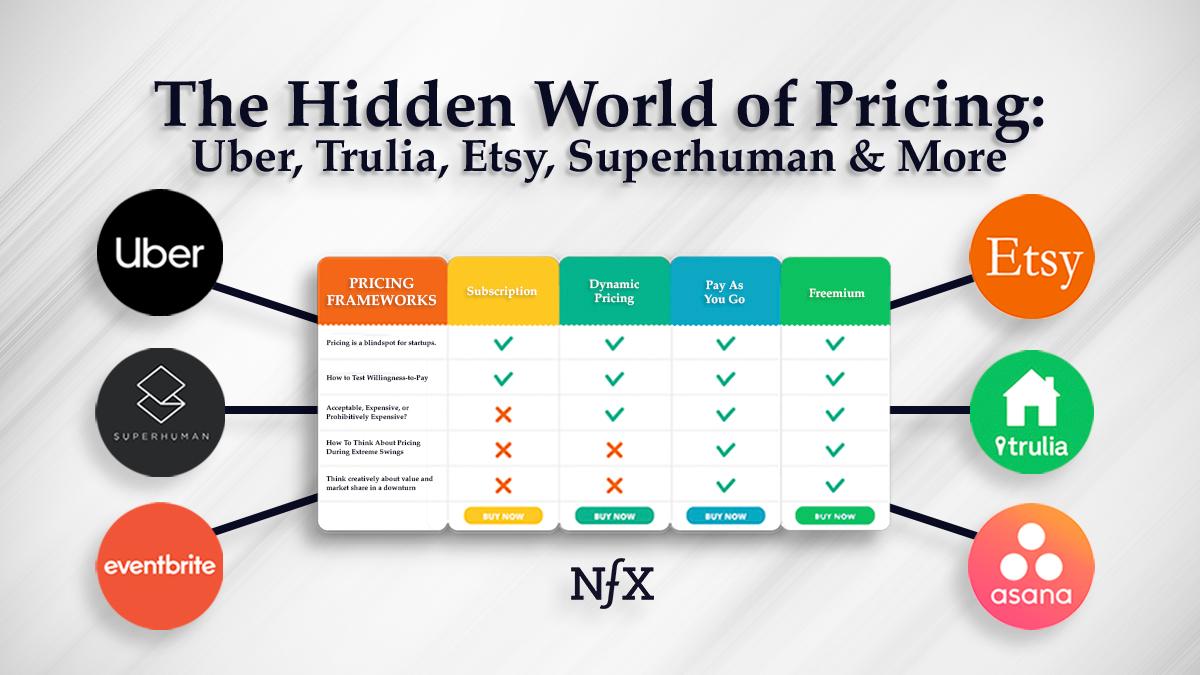

Companies are now faced with the reality of a reset with finite cash. Cutbacks are commonplace as founders adjust to the new economic and social reality, but startups rarely cut their way to success — they need to grow. So how do companies build-out of this situation?
Not long ago, the consensus was that growth was paramount — the single most important metric for a company. Profitability was a much smaller consideration. This era was characterized by books like Reid Hoffman’s Blitzscaling and Elad Gil’s High Growth Handbook. But the pendulum has swung decidedly the other way.
This essay is a guide to help Founders build iconic businesses during this challenging time and navigate the new rules of growth vs. profitability.
Do you have enough cash?
In the new environment, a lot depends on your cash position. Because of less abundant access to capital and lower valuations, some startups will have a harder time raising money. To adapt to the new rules, Founders first need to ask if they are cash-constrained.


Right now, most startups are feeling cash-constrained. If you’re enduring losses relative to a modest cash position, you don’t have the luxury to heavily invest in growth. Your strategic priority should be to reduce your cash outflow and extend your runway, either by getting to profitability or raising a new round of capital, so you’ll be in a position to respond when the market turns and capital becomes more available. However, as an early-stage startup, you are not going to cut your way to success. You have to grow.
Even if you don’t feel that you’re in a cash-constrained situation, in an environment of heightened uncertainty, the focus should be on getting to profitability in your unit economics. The last thing you want to be doing is losing money on every transaction — a seemingly obvious rule that was ignored by too many as the startup community drifted from business fundamentals during the recent economic boom.
Specifically, you want to focus on getting to a strong CAC/LTV ratio with a short payback period of less than 3-6 months or ideally less, although this can be hard for very early-stage startups to achieve without the requisite scale and infrastructure.
Great Companies Rise In Times of Crisis
Crisis spurs ingenuity. Necessity pushes hardest against us in a period of crisis — whether a macro-downturn or something more localized to a market category beyond a startup’s control. There’s nothing like staring down a diminishing cash balance to focus the mind.
I recently wrote about how to gain ground during a crisis in 28 moves startups can make to survive & thrive in a downturn, based on my past experience navigating startups through both the 2001 recession as part of the Founding team at lastminute.com and the financial crisis of 2008 as Founder/CEO of Trulia. If you’re able to grow without eroding your cash position, you can turn a crisis into an opportunity to capture critical market share.
A recession shines a light on your product-market fit and should make it blindingly obvious whether you truly have it or not. Assuming you have good product-market fit in the new reality, a downturn is often a unique opportunity in that it’s the cheapest time to acquire new customers.
My playbook at Trulia during the Financial Crisis was as follows:
- Efficiency and frugality to become cashflow neutral/positive (infinite runway).
- Product iteration to identify and double down on profitable streams.
- Scale the business as fast as possible by rapidly reinvesting revenue.
This took time, but we achieved all three within two years of the start of the recession. We set a cash floor, achieved cash-flow positive status by 2010, and were able to achieve short CAC/LTV payback periods. We then invested every single dollar back in the business and scaled extremely quickly, going public soon after.
If you’re in a position to play offense — with good unit economics and a strong cash position — a crisis is an opportunity. The best companies are the ones that have short CAC/LTV payback periods and that can grow without reducing their cash balance. Revenue is the best form of financing. If you’re seeing significantly lower CACs now than you were before, efficiency is not as much of a priority as taking the opportunity to capture market share.
After the environment has settled down, it may be time to pursue aggressive growth. But keep in mind that growth is generally expensive. You’re investing in future gains, which means your cash position is reduced by definition. If you’re a company with a good cash position and you aren’t far from profitability, then you can invest aggressively in growth even during a period of uncertainty.
Every great startup will experience some form of crisis during their lifetime. What Ben Horowitz calls “the struggle” usually comes during the early stages of a startup, and it is often the defining experience in a startup’s life. Startups will need to endure this struggle to find creative solutions to reduce cash outflow, extend runway, improve profitability, and ultimately grow.
The good news for Founders is that some of the best companies are forged during periods of crisis. We’ve seen this with Zillow/Trulia, Uber, Airbnb, Pinterest, Lyft, and many other tech success stories from the last decade were all in their formative stages during the financial crisis. And I fully expect that the next generation of iconic companies will be forged and molded by the crucible of COVID-19.
The Perennial Startup Balancing Act
Even when the market normalizes, growth vs. profitability is a balancing act throughout the life of a startup. Founders must constantly walk a tightrope between the two as they scale their company.


Founders often hear conflicting advice on what to prioritize. Different investors say they are looking for different things.
The truth is that it’s a balancing act that shifts throughout the life of a startup and as the economy changes. Ultimately, growth is more highly valued by the market than profitability, but only if the company has a viable path to profitability.
The Rule of 40: Growth vs. Profitability is a False Dichotomy
In reality, growth and profitability aren’t mutually exclusive, and both are often necessary to build a truly successful company.
Take, for example, the so-called “Rule of 40”. This is a guideline for software companies which states that the growth rate and profit margin combined of a top-performing company should be greater than 40%.
The Rule of 40 is specific to software companies, but the lesson applies more broadly. High-value, publicly-traded companies rarely drop below a certain floor of combined profitability and growth.


As shown above, public companies tend to have the highest revenue multiples when they are high growth while still remaining profitable, whereas public companies growing more modestly with high EBITDA margins have relatively lower revenue multiples. Startup Founders should design their businesses with this in mind.
Another key market dynamic for Founders to consider is the increase in financial buyers of startups in recent years — mainly private equity. In 2008, these transactions were only 4% of the total; by 2019 that number rose to 11%. This is an important trend to highlight because financial buyers tend to be more sensitive to profits than public buyers. If you are a lower growth company, an IPO is a more challenging prospect and private equity or a strategic acquisition is a more likely path.
For Founders, it’s important to keep these trends in mind as your business matures. Early on, there will be a lot of pressure to grow, but charting a glide path to profitability over the long run is important in striking the right balance as priorities shift.
The Startup Glide Path
Priorities between growth and profitability change at each stage of a startup’s life, from seed to IPO. One framework I like to use is what I call the “Startup Glide Path”, illustrated as follows:


The basic idea is that startups in the early stage should be high growth and the priority is on unit or cohort profitability, not overall company profitability as the company invests in product development and scale. However, they should chart a path “gliding” towards more moderate growth and profitability across the entire business as the business matures and scales.
Let’s take a closer look at the tactical implications of the Startup Glide path for each stage in a startup’s life.
Early Stage (Seed – Series A): Grow Aggressively
If you’re an early-stage startup, you need to be aggressive about growth if you have a strong cash position and fast CAC/LTV payback periods, as mentioned earlier. This is because strong growth is often a key requirement for securing fundraising in the early stages.
So if your startup isn’t fighting for survival because of a downturn, growth is the priority early on. At this stage, it’s about growing rapidly to achieve a certain scale and begin proving out unit economics. There will be time later to more heavily emphasize profitability — although it’s never too early to begin charting a path towards it.
That being said, there are some nuances.
- Find product-market fit before spending aggressively on growth. If you’re a seed-stage startup without PMF, you’re likely to be experiencing high churn. Growth is pointless with a leaky bucket. A product needs to be valuable enough to users that they can be retained before paying to acquire customers makes sense.
- Once you have product-market fit, you need 3-5x annual growth. Once you reach this point, demonstrating the ability to scale quickly is mandatory to get to the next stage of funding. You need to show 3-5x+ growth in key metrics for your business: revenue if you’re a SaaS, supply-side users if you’re a 2-Sided Marketplace, businesses or developers building apps if you’re a 2-sided platform, number of interactions and transactions if you’re a market network, etc.
Even once you have achieved product-market fit as a startup, revenue is rarely emphasized and investors won’t expect profitability if you have sufficient runway. In fact, you as the Founder are often explicitly tasked with not being profitable because, in the vast majority of cases, not spending enough on growth sends the signal to investors that you are not being aggressive enough to capture the market or don’t have a scalable or repeatable plan for how to achieve fast growth.
That being said, none of this means you shouldn’t try to build an efficient business. An efficient model for customer acquisition and understanding your cost of acquiring new customers will help as you grow. Here are some key efficiency indicators that investors look for in an early-stage startup:
- Payback period – The amount of time it takes for a customer’s revenue to pay back their cost of acquisition.
- Retention/churn rate – The lower the churn rate, the better. In the stickiest network effect businesses, churn in the early stages is usually close to zero.
- Business-specific metrics – The efficiency metrics that matter also differ depending on the business model. For example, Net Revenue Retention (NRR) is a key efficiency metric for B2B SaaS, while marketplaces/platforms would focus more on user retention.
The very best companies are able to generate net negative revenue churn, meaning that the expansion in revenue from existing customers exceeds the revenue lost from churned customers.
For early-stage companies, a singular focus on revenue may not be appropriate as you may be better off building a large number of engaged relationships that are lightly monetized or free where you can expand. It could be strategically important to build out a large number of relationships and ultimately reduce your CAC and strengthen the network.
While profitability remains secondary, having a clear understanding of your unit economics is important, what they are today and what you expect them to be.
Furthermore, every dollar of revenue will be much more valuable if it is recurring with very low churn, paid upfront with high gross margin, not concentrated on a few customers, and resulting from a business with strong network effects. While not all of these are possible, they are elements that help make Seed and Series A companies more attractive to investors.
There is often much more complexity in understanding where to invest for network effects businesses that by definition have a more attractive product as they scale. For example, you can go from an illiquid marketplace with no engagement to one where there is high liquidity and retention. That can turn negative contribution margins into positive ones and make seemingly expensive growth today the right path to unlocking value and future profitability.
You have to solve the so-called chicken and egg problem first to get initial liquidity. The stronger the network effect or scale benefit there is, the more aggressive you need to be at first to achieve the critical mass that enables profitable growth. It’s critical to dig into the cohorts and data here to help with identifying the right levels and areas of investment.
Mid-Stage (Series B & C): Create Optionality
In the early stage, growth is paramount. In later stages, profits and efficiency are necessary to show the long-term viability of the business. But in the middle, finding a proper balance is not as obvious. Because of this, creating conditions for optionality enables a startup to control its destiny and ultimate success. The future today for every sector and the economy at large is uncertain, so for scaled businesses options create immense value. With options, you’re not held hostage to unpredictable circumstances beyond your control.
Simply put, find a way such that growth or profitability is a choice and the company’s survival does not depend on which path it chooses or the whims of investors or the market. If capital is available and there is an important strategic or growth opportunity, then you have the option to pursue it, or if you are in a recessionary period, focus on profits to enable you to ride it out and incrementally capture market share.
Founders of early-stage companies should be keenly aware of this and engineer their customer acquisition and cost structures to give themselves options on how best to capture the opportunity.
One route to optionality is having efficient, scalable customer acquisition. If your efficiency metrics are good by the time you reach the mid-stage, then moving the needle up or down towards either growth or profitability will be relatively easy. It’s simply a matter of the amount of money you are spending to acquire customers.
On the other hand, companies that are highly efficient but rely on acquisition channels that will saturate at scale, it would be well-advised to explore and experiment with other acquisition channels as soon as possible to enable them to continue to grow rapidly. Most very cheap acquisition channels saturate at some scale and so leaders have to think one step ahead.
Deeply understanding cohort profitability is critical at this stage. Are many of the most mature cohorts highly profitable? If so, this will give you confidence that you can continue to invest and scale the business rapidly, and also demonstrate to future investors that incremental investment has a clear payback. The presence of network effects should enable continued profitability of these cohorts and growing retention and where possible adding in reinforcement techniques to further the defensibility and attractiveness of the product.
Late Stage: Gliding Towards Greater Profitability
For later-stage companies approaching their IPO or another type of liquidity event, growth is still more important than profits. The best case, of course, is when a company is both highly profitable and growing quickly.
In the 2019 IPO class, Zoom and Datadog both fit that description. Zoom, in particular, was growing quickly and showing strong positive free cash flow — a metric that is an even more powerful indicator of profitability than EBITDA. This tends to fit the SaaS profile of business metrics.
Business Models Strongly Impact Investor Expectations
A company’s business model can also impact how late-stage investors and the public market react to the rate of growth and profits.
In marketplaces and social networks, user engagement and growth can be more important to investors than revenues. In social networks, in particular, the rate of user growth (daily active users) and time spent per user on the platform can supersede revenue.
With hyper-growth (blitzscaling) for social networks and marketplaces, investors will forgive big losses, although that is changing as we’ll discuss shortly. Keep in mind, though, that your business must still have a low churn rate.
Groupon is the big cautionary tale here. They expanded rapidly through acquisition and large marketing spends to fuel user growth. Although it looked like a 2-Sided Marketplace with strong network effects, sellers did not love the product and churn rates were unsustainably high. Sellers quickly abandoned ship when it became clear the model did not work for them. Users also quickly tired of the product after sellers began to bail.
Weaker Network Effects Models = Less Tolerance For Losses
For businesses with weak or no network effects, such as many early SaaS or DTC businesses, risk is highest because the churn and replacement effect may be high but not high enough to immediately create warning signs.
For companies like this, public investors will forgive a lack of profits for a time. If losses continue to mount, growth needs to be absolutely outstanding for the company to maintain its share price and the confidence of investors. Generally, pressure builds to attain profitability quickly. Unlike network effects businesses, SaaS businesses do not have clear increasing returns to scale so it is not as easy to see a path to profitability from growth alone.
Too Much Capital Reduces Incentives For Efficiency & Profits
For mid to late-stage companies, in particular, we believe too much capital can be a real risk. Often too much capital delays the discipline required by profitability and papers over inefficiency that might be closely scrutinized if capital was tighter.
While capital can be a strategic weapon to capture a market share, maintaining strong control on efficiency of sales and marketing is critical. It’s easy to get into bad habits in the pursuit of growth when you have deep pockets and lose the efficiency that helped you get there in the first place.
Network Effects and Blitzscaling
In an environment of abundant capital, companies with network effects pursued extremely aggressive growth strategies that LinkedIn Founder Reid Hoffman called “blitzscaling”. Because network effects lead to winner-take-most dynamics, the objective of network effects companies has historically been to rapidly build scale to fuel their network effects.
For even very large companies with network effects, investors have in the past shown increased tolerance for loss-making activities because they recognize that it’s a winner-take-most or winner-take-all situation with increasing returns to scale.
Where you have good cohort profitability, scalable acquisition channels, and strong network effects, then aggressive growth is exactly the right approach.
Unfortunately, the same tactics were employed by low-margin businesses without significant network effects, such as online D2C e-commerce companies selling mattresses, shoes, meal kits, etc. These companies adopted the blitzscaling playbook, but capturing market share did not give them the same heightened defensibility as they would get if they were a company with network effects. Down rounds and investor losses followed.
But even for defensible companies, the environment is turning against aggressive blitzscaling. Few companies have an abundance of capital or such a profitable business model that they can continue to execute blitzscaling even in a downturn. The pendulum is swinging back to an emphasis on profitability and the environment is forcing companies to focus on efficiency and ingenuity over pure growth. This could be a silver lining for Founders as they look back on this period. Less capital means less competition and also less dilution.
Takeaways for Founders
In a downturn, the name of the game is to not run out of cash and give yourself the runway to figure things out until the market recovers. Rule number 1 is to survive. Rule number 2 is to win and build a category-defining business. During a downturn, Founders should focus on taking the opportunity to improve your position and capture market share while maintaining a strong cash position and efficiency.
And while it’s important to maintain profitability, don’t let that paralyse you into not growing and taking opportunities as they arise.
As Founders ourselves, we respect your time. That’s why we built BriefLink, a new software tool that minimizes the upfront time of getting the VC meeting. Simply tell us about your company in 9 easy questions, and you’ll hear from us if it’s a fit.



